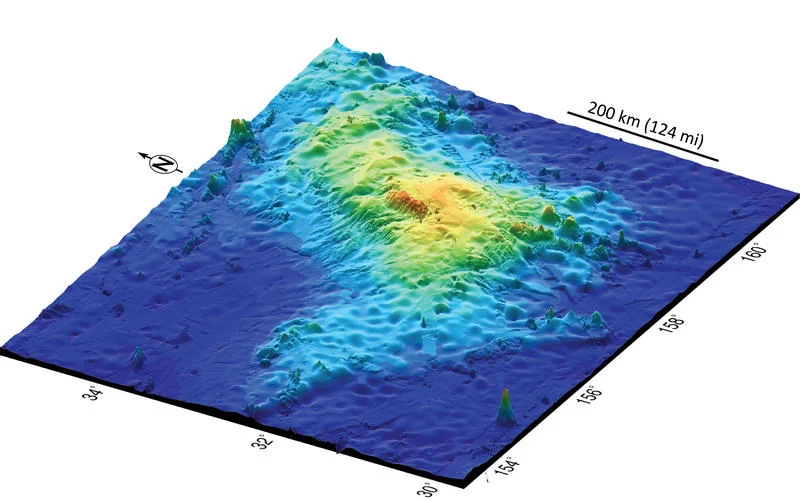Scientists Unlock Mysteries Of World's Most Massive Volcano
 |
| Kanijoman/Flickr |
The underwater mountain is roughly the size of New Mexico.
Two years after confirming that the world's largest single volcano was lurking more than a mile beneath the surface of the Pacific Ocean, scientists have begun mapping the massive underwater mountain.
What they've discovered about it thus far is as unique as it is amazing.
New magnetic data suggests Tamu Massif isn't just an ordinary volcano, but is a kind of volcanic hybrid built by two separate processes.
“We’re looking at something that’s in between a mid-ocean ridge and a simple conical volcano,” William Sager, a marine geophysicist at the University of Houston, told Scientific American.
Located approximately 1,000 miles east of Japan and 6,500 feet below the ocean's surface, Tamu Massif is about the size of New Mexico and nearly as big as the largest volcanoes on Mars. It covers an area of about 120,000 square miles -- 60 times that of Hawaii's Mauna Loa, the largest active volcano on Earth.
“This volcano is a beast,” Jörg Geldmacher, a marine geophysicist at the GEOMAR Helmholtz Center for Ocean Research Kiel in Germany, told Scientific American.
While not particularly tall -- about 2.5 miles from base to summit -- Tamu Massif is enormously wide, with very gradual slopes.
"If you were standing on this thing, you would have a difficult time telling which way was downhill," Sager told Scientific American.
In an effort to better understand how the mysterious volcano formed, Sager and his team set out on a 36-day expedition in early October to collect magnetic data, mapping nearly 400,000 square miles of the ocean floor.
As National Geographic reports, magnetic field research suggests the mountain formed relatively quickly around 145 million years ago, when lava began flowing onto the sea floor from mid-ocean ridges. The central part of the peak, however, is like a big magnetic blob, suggesting a large eruption may have been involved in its formation.
Ultimately, Sager said, studying Tamu Massif will help geologists better understand how the Earth's interior works.
"The secrets revealed will be ongoing but worth the wait as we begin to understand how such a massive volcano can form the way it did and what it means to us in respect to the formation of the planet we call home," Suraida Nanez James at the Schmidt Ocean Institute wrote in an expedition update on Nov. 2.
While Tamu Massif has earned the title of most massive volcano, Hawaii's Mauna Kea is considered both the tallest volcano and the tallest mountain. With a base about 19,685 feet below sea level and a summit about 13,796 feet above sea level, Mauna Kea is over 33,000 feet tall -- in other words, about six and a quarter miles.
Ojos del Salado, a stratovolcano on the border of Chile and Argentina, has a summit that stands 22,615 feet above sea level -- the highest summit elevation of any volcano on Earth.
huffingtonpost








%20(1).webp)